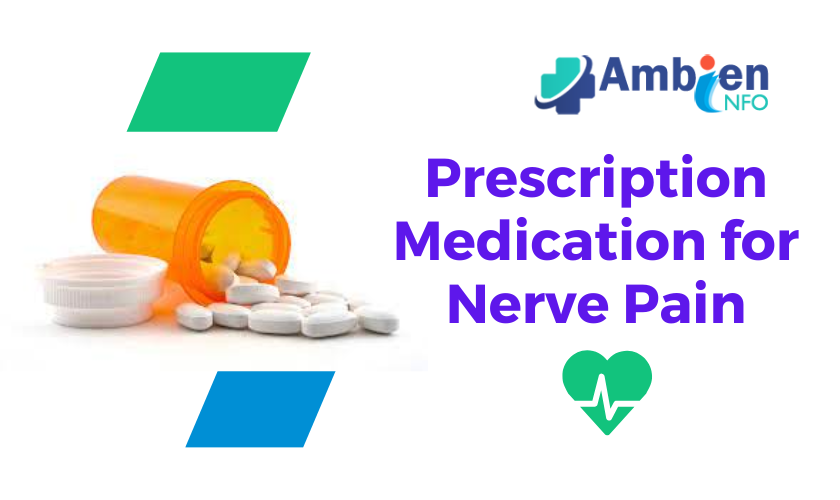Nerve Pain: Prescription & Medication
Millions of individuals all over the world suffer from nerve pain, sometimes referred to as neuropathic pain, which is a crippling ailment.
It can come from a number of conditions, including diabetes multiple sclerosis, shingles, and nerve injuries, and it is caused by harm to or dysfunction of the neurological system.
It frequently manifests as stinging, burning, shooting, or tingling sensations, making it difficult for people to go about their everyday lives comfortably.
While non-pharmacological treatments and a change in lifestyle might be helpful, prescription drugs are essential for treating nerve pain.
The universe of prescription drugs for nerve pain will be examined in this article, along with their modes of action, types, possible side effects, and suggestions for safe and effective use.
Understanding Nerve Pain
It’s important to understand the nature of nerve pain before talking about Prescription Drugs. Neuropathic pain in contrast to nociceptive pain which is brought on by injury or inflammation to the body’s tissues originates from abnormalities within the neurological system.
These abnormalities could be nerve compression, aberrant neurotransmitter activity, or damaged nerves. Nerve pain has a distinct aetiology that makes it more difficult to successfully treat.
Prescription drugs for nerve pain: mechanisms of action
In order to reduce pain symptoms, prescription drugs for nerve pain mainly focus on the neurological system. The following are some of the main mechanisms of action:
a. Serotonin and norepinephrine
two neurotransmitters that are involved in pain modulation, are affected by medications like tricyclic antidepressants (TCAs) and serotonin-norepinephrine reuptake inhibitors (SNRIs).
b. Anticonvulsant drugs like gabapentin and pregabalin
which block sodium channels, interfere with nerve signalling and lessen pain signals.
c. Increasing GABA Activity
The inhibitory effects of GABA, a crucial neurotransmitter that lowers neuronal excitability, are potentiated by medications like benzodiazepines and anticonvulsants.
d. NMDA receptor antagonists
such as ketamine, assist prevent the transmission of pain signals by the N-methyl-D-aspartate (NMDA) receptors.
Painkillers for Nerve pain
Antidepressants:
Amitriptyline and Nortriptyline are examples of tricyclic antidepressants (TCAs).
Duloxetine and Venlafaxine are SNRIs or serotonin-noradrenaline reuptake inhibitors.
Anticonvulsants:
Carbamazepine and lamotrigine are sodium channel blockers. Gabapentinoids include gabapentin and pregabalin.
Opiates Tapentadol:
tramadol (Note: Due to its propensity for addiction and negative side effects, Opioids are often only used as a last resort.)
Topical medications:
- Include capsaicin cream and lidocaine patches
- Ketamine an NMDA receptor antagonist
(Adjunctive therapy) Benzodiazepines:
Prescription drugs have the potential to significantly reduce nerve pain but they may also have adverse effects that need to be carefully examined. The following are typical adverse reactions to drugs for nerve pain:
- fatigue and lightheadedness
- nausea and diarrhoea
- Constipation
- mouth ache
- Gaining weight Mood swings
- brain disturbances
Patients must inform their healthcare practitioner of any side effects so that they can change the dosage or, if necessary, look into other options for treatment.
Factors to Take Into Account for Safe and Effective Use:
Patients should adhere to the following rules for safe and effective use of prescription drugs for nerve pain:
Medical Supervision:
Before beginning any prescription medicine, always seek the advice of a healthcare provider.
The patient’s medical history will be examined, potential drug interactions will be evaluated, and the best medication and dose will be chosen.
Progressive Titration:
To reduce side effects, many nerve pain drugs call for progressive titration. Starting with a low dose and progressively increasing it as tolerated is how this is done.
Compliance:
To get the most out of your medication, follow the directions for dosage and timing.
Monitoring:
To keep an eye on the effectiveness of the drug and any potential side effects, it is important to schedule regular follow-up consultations with the healthcare provider.
Use caution if you also use other medications:
To prevent drug interactions, tell your doctor if you also take any dietary supplements or herbal remedies.
Limiting alcohol consumption:
can help you avoid aggravating the drowsiness and vertigo that some nerve pain drugs can cause.
Prevent Abrupt Discontinuation:
To avoid withdrawal symptoms, some treatments call for a tapering-of process. It could be risky to stop using some drugs suddenly.
Pregnancy and Breastfeeding:
Women who are pregnant or nursing should talk to their doctors before using any prescription painkillers.
Conclusion:
Prescription drugs have transformed the way that nerve pain is treated, giving those who struggle with this difficult condition the much-needed relief they require.
These drugs efficiently reduce pain sensations and enhance the quality of life for numerous people by focusing on the specific abnormalities of the nervous system.
However, it is crucial to use them with prudence, taking into account any potential adverse effects, and following medical advice for safe and effective results.
The future holds promise for even better treatments to address nerve pain, bringing hope to those who bear its merciless grip. Research and medical improvements are ongoing.
